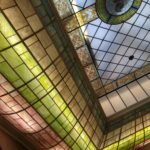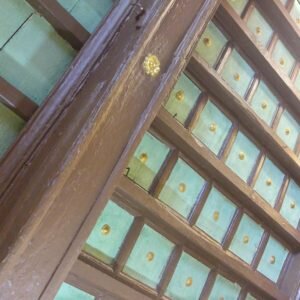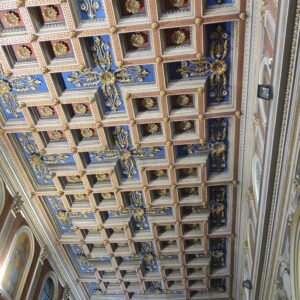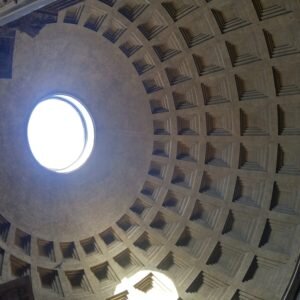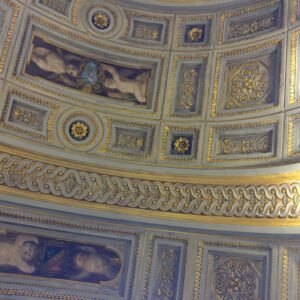Ceilings As A Foundation —
Architecture is at the heart of all interior design, with ceilings often overlooked in terms of their significance. Bring a historical context and some age into the equation, and one can easily come upon a structured upward view that’s ever so breathtaking. With aged European ceilings as our example, we catalogued a few with our #TurnstylistAbroad. We certainly hope we’ve done them justice as we captured them.
Imagine the celestial. Yes, it’s ethereal and perhaps overly poetic, but these dome-shaped ceilings deserve such recognition. They are built with architectural mechanisms called buttresses; as pictured, these cathedral ceilings ‘wing’ in shape and join together through spines called groins. This detail allows for openness of space, much improved acoustics, and an encompassing closeness to the person experiencing them. Detail has lots of room to find itself and as you can see, color and gilding help bring a little heaven on earth. You’ll find yourself looking up for hours, starting to imagine the fun you might have in an entryway of your own – the perfect place to try something similar in terms of imagery.
Coffered ceilings refer to the box-shape detail in this photo. Often used as a mechanism where the architecture didn’t imply a richness on its own, this type of detailing was typically added post-build. Since it is not integral to the structure itself, it can be found in a wide varieties of materials, such as stone or wood as found here. The incredible symmetry created by these box shapes allow for repetitive detailing, creating instant patterning. In today’s home, this is the perfect thing to replicate using paint in a dining room, for example.
Last, but not least, the industrial revolution gave way to glass ceilings. At the height of the turn into the 20th century, greenhouses and cut glass made all sorts of opulence possible. While this is certainly harder to introduce in a modern home, the watercolor effect is something inspiring as a starting point. Think: color palettes and lightness.
Regardless of how you chose to interpret them, these classical techniques provide a basis of any decorative embellishment and hopefully inspire you as much as they did us. We see a way to look up… way up.



